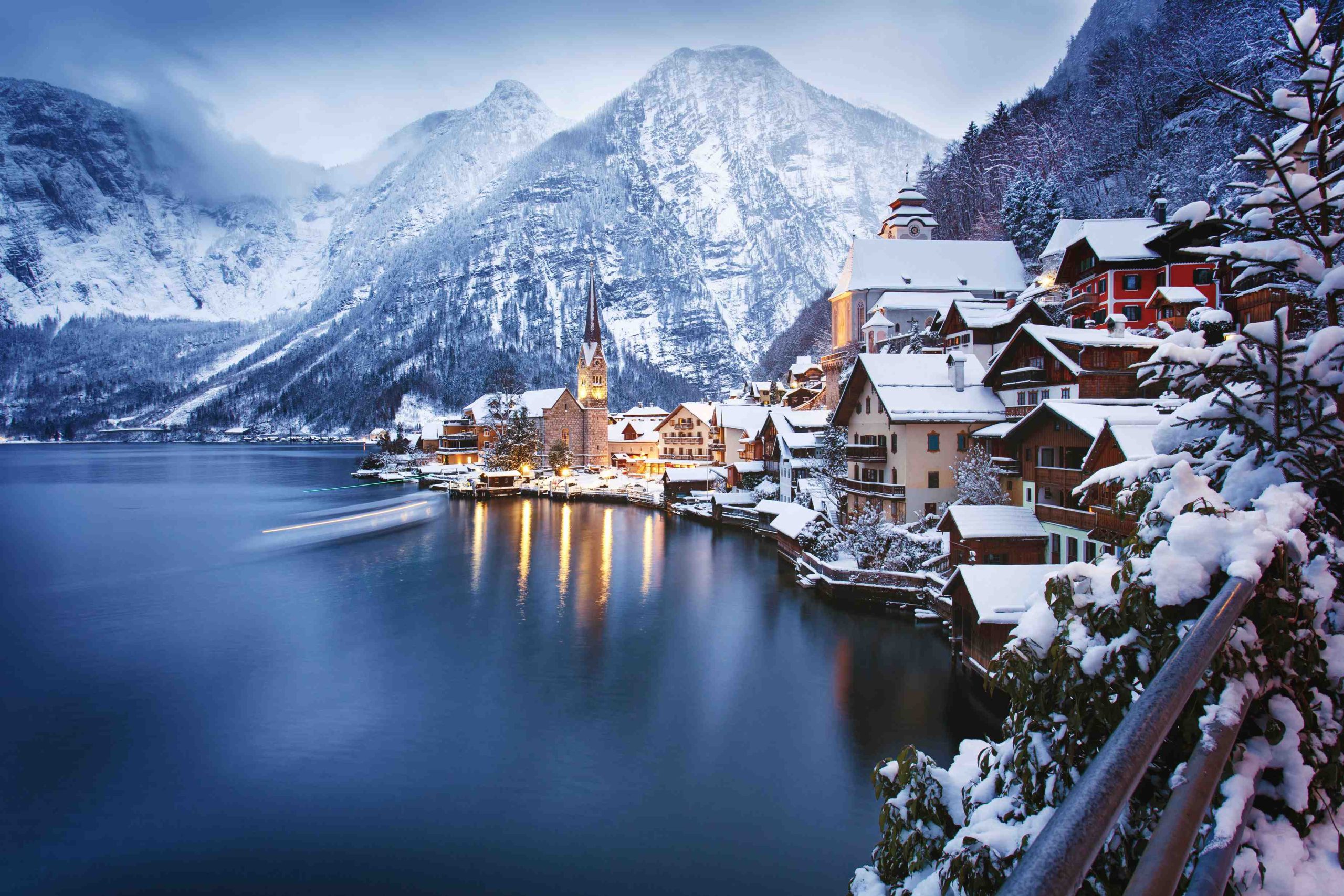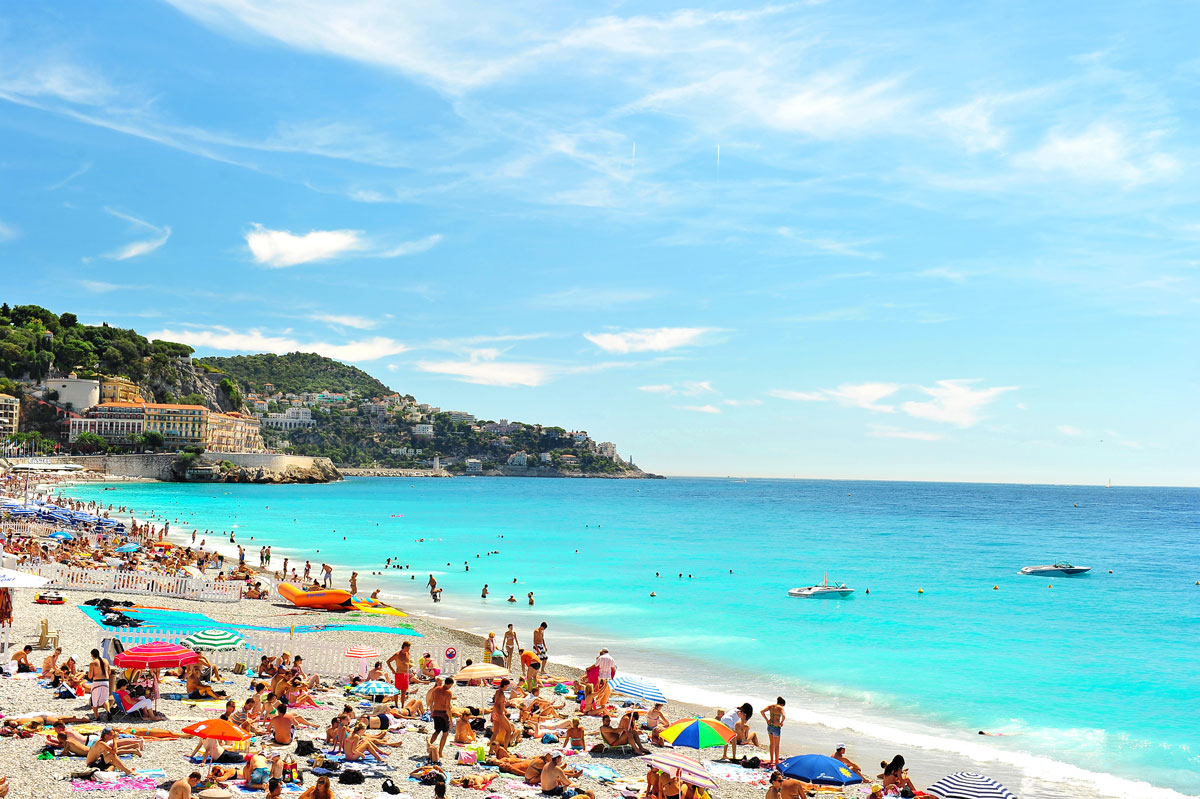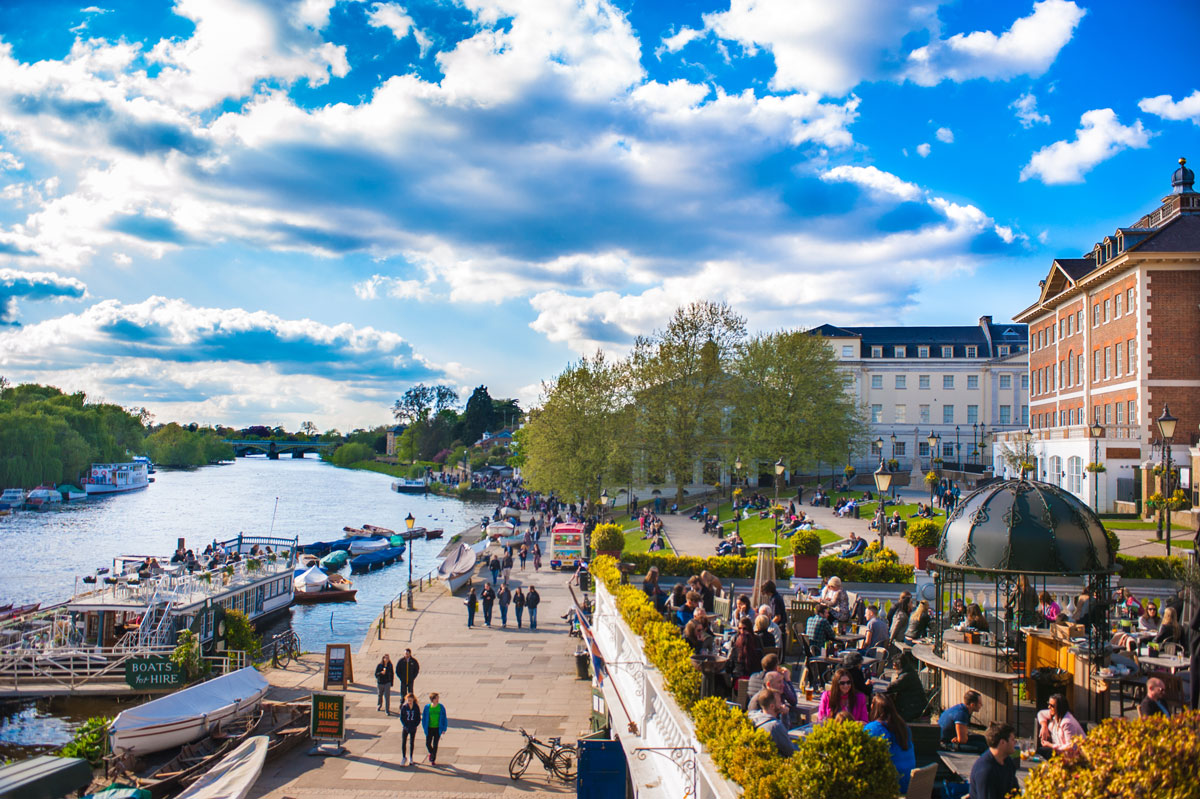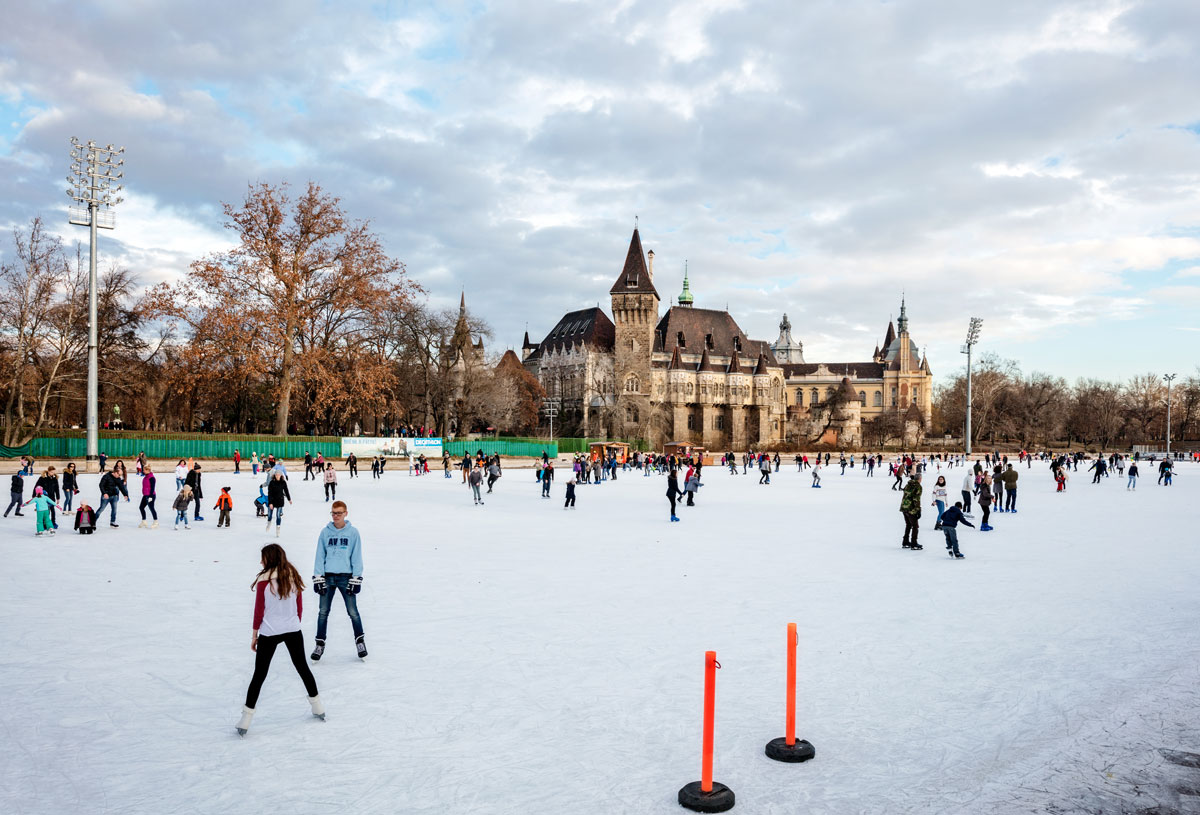When is the best time to visit Europe weather-wise? Well… when is the best time to have a piece of chocolate or a leisurely nap? The answer is obvious. Always! The continent of Europe is a rather large place so it spans many different longitudes and weather zones.
Anytime is the best time to visit Europe. It all depends on where you’re going.
Below you can see the average temperatures of the different parts of Europe and we’ll also include some season handy travel tips for your European holiday! It’s also important to know the differences between peak season (summer), low season (winter) and shoulder season (spring & autumn) when planning when to travel.
Summer vs Winter vs Spring and Autumn
As a general rule of thumb, summer in Europe equals perfect weather. But it also means lots of crowds (meaning long lines) and an exodus of locals. In terms of budget, it has high accommodation prices. Winter means freezing temperatures and short days. Your budget will be lower here, as you have affordable rates on just about everything. The downside? Lots of closed attractions. Spring and autumn are probably the best times to travel. Shoulder season has fewer crowds and better prices. The weather isn’t too hot or cold. Just right for a holiday of exploring!
Planning a trip to Europe? Use this handy tool to look up the weather averages by destination.

WESTERN EUROPE
In Western Europe, you’ll find Austria, Belgium, France, Germany, Liechtenstein, Luxembourg, Monaco, Netherlands and Switzerland.
Average temperatures per season:
Summer (June – August): High 24°C, Low 14°C
Autumn (September – November): High 14°C, Low 7°C
Winter (December – February): High 5°C, Low 0°C
Spring (March – May): High 14°C, Low 5°C
As stated before, summer throughout Europe is delightfully warm but extremely busy. Paris is crammed to the hilt during June and August. Tourists folk flock here for summer sun, to stroll Parisian neighbourhoods and visit attractions in good weather. Even though you’ll experience mostly sunny days, July is Paris’ rainiest month! Remember to pack a poncho or umbrella. Also, keep in mind that Bastille Day takes place in July.
The off-season is much quieter and less expensive. But not in cities like Berlin and Brussels. They are big international business centres, thus they are busy at this time of year. This means accommodation prices and flights will not be more affordable. Many tourist-oriented attractions and shows close down over the winter months. But some cities, like Vienna, show their best when the temperatures drop. This is a great time to see opera and listen to choirs! You could also visit exciting travelling exhibitions at big museums.

EASTERN EUROPE
Eastern Europe includes Bulgaria, Czech Republic, Hungary, Poland, Russia, and Slovakia.
Average temperatures per season:
Summer (June – August): High 25°C, Low 14°C
Autumn (September – November): High 13°C, Low 5°C
Winter (December – February): High 0°C, Low: -6°C
Spring (March – May): High 14°C, Low 4°C
Eastern European summers are warm! Sometimes cities like Moscow even experience intense heatwaves. These heatwaves can drive the locals out of town. Make sure not to forget your sunblock!
Travel Tip: Carry a small travel umbrella to protect you against unexpected summer showers. Lightweight slacks and long summer dresses are your best bet. Shorts can limit your access to certain Orthodox cathedrals and religious attractions. Residents escape the heat by making use of their cities’ green spaces, or they get-together at local watering holes.
Visiting Eastern Europe in the wintertime? Be sure to make the most of the limited daylight hours. Certain sites remain open during this time of year but tend to close when the sun goes down. Note – this is earlier than you think. But, most of the larger cities still cater to the sightseeing crowds. Not the small towns though, they go into hibernation mode in the coldest months. Be sure to check ahead of time – the attractions you want to see might not be open during your vacation.

SOUTHERN EUROPE
Southern Europe includes Albania, Bosnia-Herzegovina, Croatia, Greece, Italy, North Macedonia, Montenegro, Portugal, Serbia, Slovenia, and Spain.Travel Tip: Croatia, Greece and Italy have the warmest weather in Europe year-round.
Average temperatures per season:
Summer (June – August): High 30°C, Low 17°C
Autumn (September – November): High 20°C, Low 10°C
Winter (December – February): High 7°C, Low 0°C
Spring (March – May): High 18°C, Low 7°C
Summer in Southern Europe means lots of locals and tourists on holiday. They all make their way here to enjoy the incredible climate. If you don’t enjoy big crowds or long queues, rather take the road less travelled. Find those hidden spots… For instance, the beaches along the Peloponnese Peninsula in Greece are just as beautiful as those on the isles of Santorini. Perks? Not as overcrowded. Similarly, certain day-trip destinations are best enjoyed in the evening. Especially the day trips in Madrid and Florence. They are quieter because most of the day-trippers have already finished up for the day. You should try to sleepover and enjoy the local flavour in new spots after the sun goes down!
Travel Trip: Shoulder season in Mediterranean Europe (France, Spain, Italy, Croatia, Greece) can actually be busier and more expensive than summer. This is because the weather is a bit more temperate. Don’t bargain on fewer crowds and better prices during this time of year. Torn between going in spring or autumn? Southern Europe is generally greener in spring, and a bit dry in autumn. Hikers should go in autumn, as the best Alpine trails are still covered in snow in spring.
Winter in southern Europe is actually a treat! Big cities like Madrid, Rome and Athens are uncomfortably hot during summer. This means many restaurant and bar owners escape the heat to cooler climates. So, you can ski to your heart’s content throughout the low season. And you’ll have your pick of awesome eateries, exhibitions and special events.
Related: Experience the culture, cuisine and centuries worth of history on a trip to southern Spain and Portugal.

NORTHERN EUROPE
Where is it? Northern Europe consists of Denmark, Estonia, Finland, Ireland, Latvia, Lithuania, Norway, Sweden, and the United Kingdom.
Finland, Sweden and Russia are some of the coldest countries of Europe – pack plenty of layers and waterproof boots!
Average temperatures per season:
Summer (June – August): High 22°C, Low 13°C
Autumn (September – November): High 11°C, Low 6°C
Winter (December – February): High 1°C, Low: -4°C
Spring (March – May): High 11°C, Low 2°C
Summer is the best time to visit Scandinavia, Britain and Ireland. It doesn’t get as crowded as Southern and Western Europe. Weather needs to be on your side when planning your Northern Europe trip. Scandinavia can get extremely cold! It’s best to plan your travels around their short tourist season. If you don’t like the cold, your trip should fall between mid-June to late August.
Winter in Northern Europe is very cold! But then again, these countries are prepared. They all have central heating and loads of indoor attractions. You can plan day trips to museums and theatres. The warming meals and wintertime charm will also make for a memorable cultural experience. Can you brave the cold and possibly a blizzard or two? If you can, you will be rewarded with the best winter travel experience in Northern Europe. You can experience the local feel without the touristy interruptions.
Winter in Europe is charmingly festive!

This should give you a good idea of when to travel Europe – depending on the type of holiday you’re looking for. Just make sure you are prepared for anything. The weather in Europe can be very unpredictable! But, half the fun of travelling is being surprised and caught a little off guard, isn’t it? Questions about the weather conditions in a particular country?
Get in touch with our awesome client service department. They can make the unpredictable a little more bearable!
Ready to Start Planning?
Drop us a message and let’s make your next adventure happen — we're here to help every step of the way.
Join the Expat Explore family!
We'll deliver top travel tips, insider info and travel inspiration right to your inbox.
